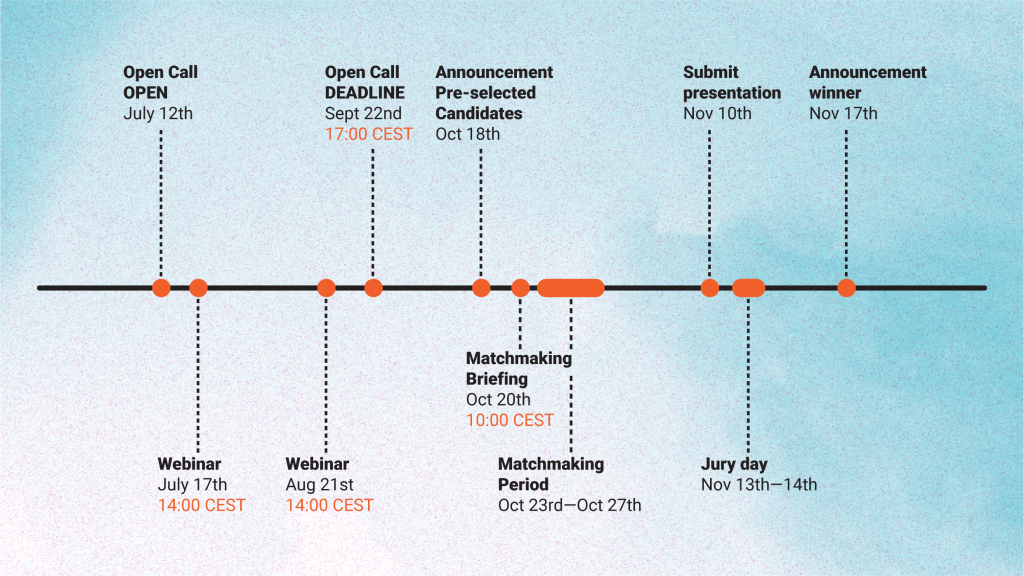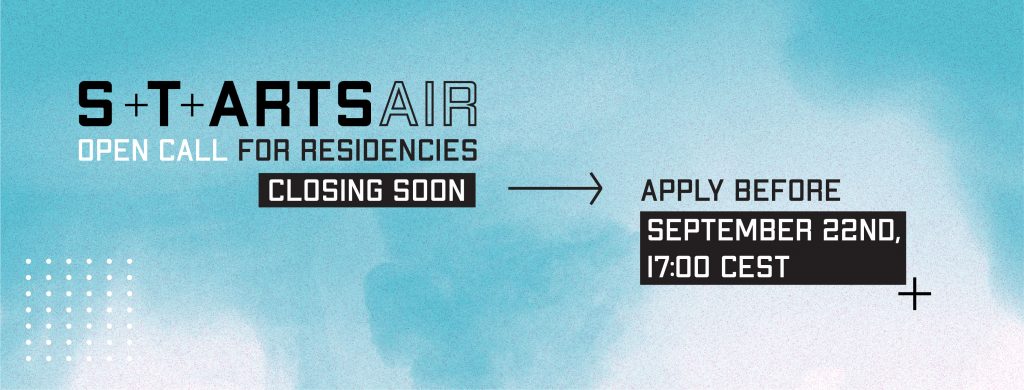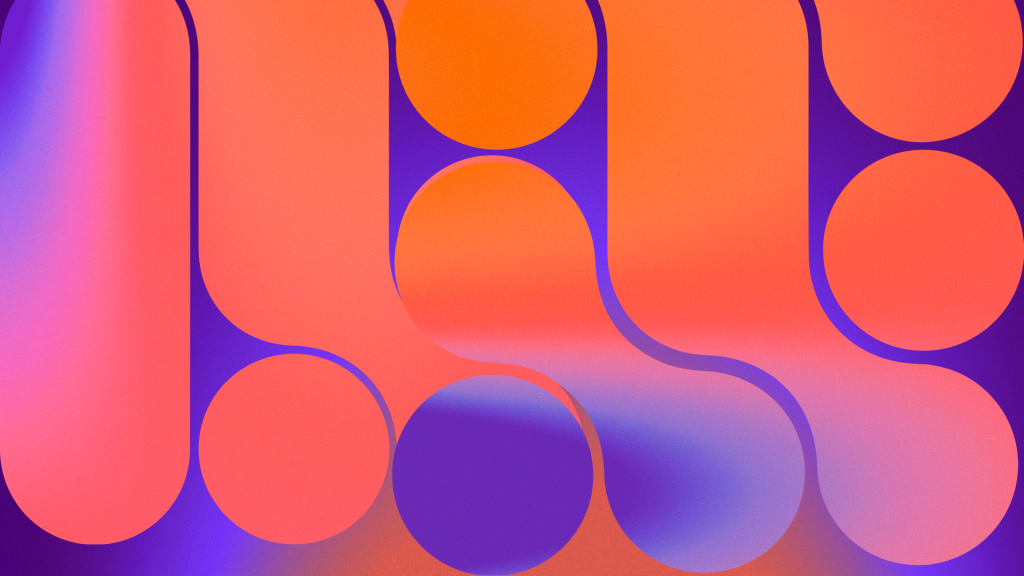Open Call – S+T+ARTS AIR
S+T+ARTS AIR launches a new S+T+ARTS residencies programme focused on two main themes: Resilient interspecies urban ecosystems and Human AI Ecosystems, presenting a unique opportunity for artists to collaborate at the intersection of art, science, and technology.
+ The AIR concept
Air extends beyond the invisible substance we breathe. It encompasses both visible and invisible elements, complementing our senses and connecting us to our surroundings. It acts as a warning system, heightening our perception of danger and evoking deep emotions through scent. Air enables the existence of sound and has a tactile connection to our body, particularly our hair and skin.
Air played a vital role in verbal communication, language development, and logical thinking, laying the groundwork for scientific and technological progress. This dynamic has allowed humans to translate intricate processes into symbolic representations, making the unseen visible. Through the integration of science, technology, and art, we aim to create challenges that bridge these realms of knowledge, fostering a deeper understanding of the diverse realities and concepts intertwined with the air.
We invite creative and experienced artists to participate in the S+T+ARTS AIR Residencies, which deepen the multifaceted nature of AIR and its profound significance in our lives.
For artists interested in joining AIR as a resident artist, the project consortium offers access to the technologies and know-how of two of Europe’s leading supercomputing centers (HLRS in Stuttgart and BSC in Barcelona), SONY Computer Science Laboratories in Rome, HEKA lab & KUBER in Koper, Slovenia, and the artistic expert organizations Fundación ÉPICA La Fura dels Baus from Badalona, Media Solutions Center (MSC) from Stuttgart, In4Art from Rotterdam and RCR Architects from Barcelona.
In this way, AIR is born from the will of 8 organizations from 5 different countries belonging to different fields of knowledge – technology, research, industry, and culture – to establish new methodologies, processes, indicators and seeks artists to collaborate with them.
AIR will support and host 10 artists through the S+T+ARTS residencies between December 2023 and September 2024, distributing a total amount of 400.000 eur.
The S+T+ARTS AIR Residencies aim to have a lasting impact on the artistic community, as well as the broader public. Artists will be encouraged to actively participate in workshops, exhibitions, and public events, sharing their creative processes and engaging with diverse audiences.
+ Timeline

With this Open Call, AIR is looking for Artists willing to collaborate on the intersections of art-science-technology and innovation, with a strong motivation to do so and an artistically and technically sound reflection on the topic(s) relevant to this call.
The main objective of this call is to identify 20 artists who are convincing in their profile, motivation and reflection on the topics at hand. This call does not expect artists to submit full project proposals.
The pre-selected artists will enter a proposal development matchmaking process (Stage 2) with scientists and core experts from the consortium to ensure a fit between the artistic interests, the scientific interests and the real-world challenges faced by society. The 20 pre-selected artists will conclude Stage 2 with the presentation of their proposal in front of the selection committee jury.
Each applicant will be matched with one of the four hubs for art-driven innovation which are part of AIR. The hubs are located in Germany, Spain, Slovenia and Italy.
The steps within the AIR 2-stage Open Call until the start of the S+T+ARTS residency projects are as follows:
- Individual application to the open call with an in-depth expression of interest before the deadline of September 22nd 2023 17:00 CET.
- Proposal development matchmaking process for the pre-selected individual applicants, with the help of AIR consortium partners, between October 18th and November 10th 2023
- Presentation of the final proposal to the jury on November 13th or 14th 2023
+ Who can apply?
This call is a great opportunity for Artists who seek to collaborate with centers for high performance computing & computer science on experiments where art, science and innovation come together.
We are seeking artists with a passion for exploring the perception of air through the uses of our senses and in co-existence with other species and organisms. They question and promote a deeper understanding of the fields that surround us and the profound influence of these invisible waves. This entails exploring the boundaries of existing technical tools and pushing for novel ways and perspectives to look at AIR.
The AIR S+T+ARTS residency has to be proposed by one Artist (natural person) or Artistic company or association (legal person).
An Artist refers to: a self‐employed individual (freelancer) or (co)owner of an artistic company or association that undertakes artistic activities as a profession/job occupation. The artist must have produced enough artworks to assess their artistic quality and experience. The Artist must share evidence for each artwork reference as part of their portfolio. Previous experience with art-tech experimentation projects will be valued but does not represent a condition for participation.
The natural persons who act as Artists have to be citizens or permanent residents in any of the eligible countries listed below:
- The Member States of the European Union and its Overseas Countries and Territories (OCT) or
- Associated Countries to Horizon Europe.
The AIR consortium partners or their affiliates or employees or permanent collaborators are not eligible for funding within this open call.
+ What do we offer?
AIR will select up to 10 applications that will take part in a 10 month support programme where they will be working towards defining, experimenting, and prototyping in collaboration with a dedicated core team from the consortium.
AIR will offer the beneficiaries the following:
- Up to 40 000 EUR as a lump sum grant per Artist
- Guidance and support by their hosting hubs from the consortium (the hosting hub will be defined during the second stage of the selection process) and the mentoring/ innovation partners
- Mentorship and collaboration throughout the residency on the following areas:
- Conceptual mentoring by RCR
- Artistic production, experience design, participatory experiences and transmedia storytelling mentoring by EPICA & MSC
- Art-driven innovation mentoring by In4Art.
- Access to scientific knowledge and facilities, provided by the scientific and local partners and consisting of available knowledge, programs, solutions, and equipment to support the development of the project: see Annex 2 with an explanation of facilities per HUB.
- Access to the European S+T+ARTS network.
+ Direction 1: Resilient interspecies urban ecosystems
As a larger share of humanity moves to urban areas, and technology changes drastically how certain industries and spaces work, our shared space becomes more difficult to navigate, manage, and sustain. The visible part of cities is filled and connected with the invisible: air, sound, smell, electrical fields, as well as societal constructs like safety, diversity, inclusiveness, closeness to nature, and others. AIR aims at joining artists and researchers for making these invisible urban structures visible and help explore the challenges that might define our quality of life and our sustainable future.
Challenge nº1: What could be the role of sound in modeling future cities?
As we change our lifestyles to fight climate change, how will cities sound? Apart from the transition to electric vehicles (in all sizes and shapes), we will see more pervasive signaling, communication devices, and the reintroduction of nature in the city. Can we actively design the urban acoustic experience to improve our lives? The voice of artists and scientists together will be necessary for creating experiences with the power to sway urban planning decisions, imagining, exploring, and even designing the sound of future cities.
Challenge nº2: Can virtual replicas of cities trigger urban regeneration?
Cities work through myriad invisible systems–some airborne, some buried, others a product of the interaction between the built domain and policies and habits. One of the big challenges is improving the quality of life and mental health within cities while not disrupting the socio-economic fabric, fostering instead the natural tendency of human beings to fulfil their needs and equal access to all opportunities. It is paramount to tackle urban areas’ challenges beyond pure optimisation schemes, keeping a transformative eye instead. The power of supercomputers enables novel tools, like Urban Digital Twins, that can connect multiple disciplines, scales, and stakeholders, allowing us to explore the consequences of new scenarios and policies virtually. Artists are invited to work in tight collaboration with researchers to use AI-powered tools to visualise and explore the invisible interconnectedness and complexity of city systems, making the hidden beauty of our urban environments visible and enjoyable.
Challenge nº3: How can we transform urban ecosystems through our senses?
Air is a medium that can carry communication to multiple senses (sight, sound, smell, and even haptic response to sound) and can be exploited to create powerful multisensory experiences in indoor and public spaces. Emotions and moods that complement traditional communication can transform or even create urban ecosystems in innovative and disruptive ways. In order to create immersive (AR, VR) experiences that talk directly to our environmental consciousness and discover new interaction interfaces, artists must work together with scientists to explore and experiment with transducers, in-bone headphones, data sonification and smellification, always keeping in mind possible cultural and policy-making impacts of this novel approach.
+ Direction 2: Human-AI Ecosystems
While AI-powered digital systems make the news by taking the world by storm, we are already in a world where we are surrounded by invisible algorithms that touch and influence our lives in almost every way: What we eat, what we enjoy, where we work, and how we live is decided or influenced by invisible networks of algorithms. As AI gets closer to us and more pervasive, we need to improve our way of living with them by equipping them with natural, spontaneous, intuitive behavior, leading to human-robot collaboration in creative activities but also in manufacturing / health / food / etc which improves productivity while decreasing ecological impact.
Challenge nº1: How will the digital twin of our respiration system change us?
Personalized medicine is headed towards creating virtual replicas of each of us to create tailored treatments for our bodies. Supercomputers can now simulate a digital twin of our respiratory system to help us measure and prevent diseases. However, their complexity requires collaboration with artists to explore not only their direct use, but also how will we interact with our digital replicas, how we will relate to them, and how human digital twins will change our lifestyles and the relationship with our bodies.
Challenge nº2: Can we create a Human-AI ecology?
As AI and algorithms are more pervasive and are responsible for more decisions in our lives, we need to create novel, intuitive and ecological ways to integrate them in our lives. The challenge is to create environments that augment human creativity and power through a virtuous cycle where machines and humans improve each other leveraging their skills–environments and spaces that can be created themselves through the use of AI. Artists and scientists are needed to explore novel interfaces, or even making the space itself the interface, relating to the person through the air around them. Possible use cases include singers, musicians, and performers working with AI or robotic entities to enhance, transform, and create music, movement, and experiences, or citizens and policy makers jointly designing and assessing AI-generated solutions for mobility around urban or indoor spaces.
Challenge nº3: How could we redraw the boundaries of perception?
The interaction between human and AI opens up new challenges and opportunities in shaping how we perceive our world around us. Artists can help scientists explore the emotional and moral aspects of communicating with AI systems, bringing a unique perspective to enrich human machine collaborations and their impact, as well as enriching future European AI generative models (language, music, sound, image). As artists and scientists work together to discover and exploit the whole gamut of our perception, they can also explore the perception and senses of other species and organisms, helping us improve our interspecies communication as well as our understanding of and coexistence with artificial intelligence entities.
+ Webinars
AIR hosted two online webinars (on July 17th and August 21st) about this open call to clear doubts and answer questions live.
Held on July 17th at 14:00 CEST on the Zoom platform, the 1st webinar provided an engaging platform for artists, creatives, and enthusiasts to explore the essence of the AIR concept and the opportunities it holds for innovation and collaboration. We’ve presented the consortium partners driving this initiative, explored the four S+T+ARTS Regional Centers, gained insights into the project’s challenges and artistic exploration, learned about the application process for the S+T+ARTS residencies and gained valuable tips on how to submit a compelling proposal, as well as participated in a live Q&A session.
Held on August 21st at 14:00 CEST on the Zoom platform, the second webinar provided more insights into the scientific directions and challenges employed in this residency program as well as got more information on the residency outline, evaluation criteria, and the matchmaking process.
If you have any questions, please consult our Guide for Applicants and FAQ.
This project is funded by the European Union from call CNECT/2022/3482066 – Art and the digital: Unleashing creativity for European industry, regions, and society under grant agreement LC-01984767


